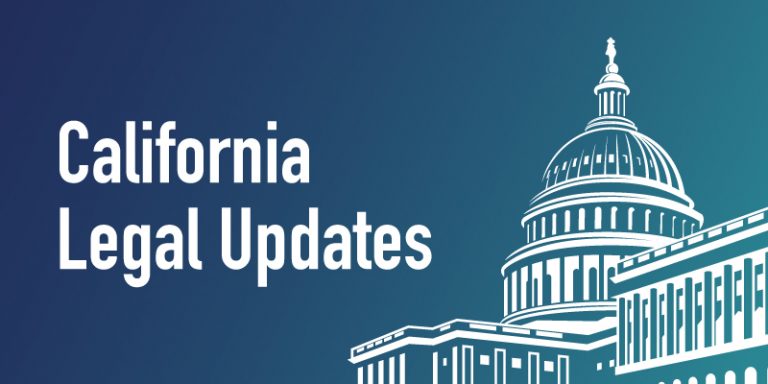As the year-end is approaching quickly, it’s important to be aware of the recent and upcoming California legal updates for businesses. There is also an upcoming webinar on this topic hosted by our partners at Chariot Consulting. We encourage all California businesses to read the updates below and attend the webinar if you can. The webinar will be held on Tuesday, November 10, 2020, 11:30 AM – 12:30 PM PST. You can register for this free event
here.
1. SB 973
Governor Newsom signed into law a requirement that private employers with 100 or more employees must annually report to the state detailed pay data categorized by gender, race, and ethnicity.
- SB 973, signed into effect late on September 30, will require covered businesses to report this data to the Department of Fair Employment and Housing (DFEH) on March 31, 2021, and every March 31 after that.
2. SB 1383
Governor Newsom signed legislation that will significantly expand the California Family Rights Act in a manner that will impact both small and large California employers. The CFRA requires covered employers to provide up to 12 weeks of unpaid leave during each 12-month period for family and medical leave purposes.
- SB 1383 expands CFRA to apply to employers with five or more employees and expands the scope of “family members” for whom employees can take leave to include many additional categories. It will go into effect on January 1, 2021
3. SB 1159
In May 2020, Governor Gavin Newsom issued an executive order that created a time-limited rebuttable presumption for employees to seek workers’ compensation benefits if they tested positive for COVID-19 while on the job. The Executive Order expired in July.
- On September 17, 2020, Governor Newsom signed SB 1159, extending the presumption for specified employees. SB 1159 took immediate effect and will remain in effect until January 1, 2023
Read more about SB 1159 here.
4. AB 685
On September 17, 2020, Governor Newsom signed AB 685, which imposes stringent notice and reporting requirements in the event of COVID-19 exposure in the workplace and expands the California Division of Occupational Safety and Health’s (“Cal/OSHA”) enforcement authority to address such standards.
- Under AB 685, employers must give written notice within one business day upon learning of potential exposure to COVID-19 in the workplace. The notice must be provided to all employees and employers of subcontracted employees present at the same worksite as the “qualifying individual” within the infectious period, stating that they may have been exposed to the virus.
5. Labor Code Section 248.1
Governor Gavin Newsom approved a significant supplemental paid sick leave law, which became effective September 19, 2020. The law requires certain larger employers to provide up to 80 additional hours of COVID-19 related paid sick leave “to all employees who leave their homes or place of residence to perform work and who work for employers that have 500 or more employees nationwide.” According to the California Department of Industrial Relations, Division of Labor Standards Enforcement (“DLSE”).
6. Labor Code Section 3212.88
This section of the law applies to any employee other than Frontline workers and Healthcare workers who test positive during an “outbreak” at their workplace if the employer has five or more employees. COVID-19 is presumed work-related if an employee worked at their place of employment at the employer’s direction on or after 7/6/2020, and the following two elements are met:
- The employee tested positive for COVID-19 within 14 days after working at the employer’s location, AND The positive test occurred during an “outbreak” at the employer’s specific location.
- An “outbreak” is defined as a COVID-19 occurrence at a specific employment location within a 14-day period AND meets one of the following:
- If an employer has 100 employees or less at a specific location and four or more employees test positive for COVID-19; OR
- If an employer has more than 100 employees at a specific location and 4% of the employees test positive for COVID-19; OR
- The local public health department, State Dept. of Public Health or OSHA or school superintendent, orders the specific place of employment to close due to the risk of COVID-19 infection.
There is a 45-day timeframe to determine if COVID meets the above standard.




